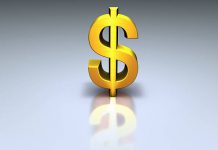Consumer price growth continued to cool in August, up 0.3% month-on-month (m/m), down from 0.5% in July. As a result, headline inflation was 5.3% year-on-year (y/y), a tick below July’s pace.
Core inflation (ex. food and energy) also continued to cool, rising a modest 0.1% m/m in August, after rising 0.3% m/m in July. That saw the year-on-year rate of core inflation ease to 4.0% in August, down from 4.3% in July.
Energy prices bucked the broader cooling trend, rising 2.0% m/m on higher prices at the pump. Energy costs have risen for three consecutive months were up 25% versus a year ago.
Underneath the modest increase in core prices, core goods prices rose 0.3% m/m. New vehicle prices continued to rise sharply, up 1.2% m/m in August. However, used vehicle prices continued to ease after their pandemic-related spike, declining 1.5% in August. Prices for household furniture and operations were also up 1.3% m/m, driven mainly by furniture.
Prices for core services were flat in August, coming down from hotter readings in the spring. The important shelter category rose a trend like 0.2% m/m, as slightly larger 0.3% increases for rent and owners’ equivalent rent were weighed down by a 2.9% m/m drop in lodging away from home. Transportation services prices fell 2.3% m/m overall, led lower by a 9.1% m/m drop in airline fares and an 8.5% m/m drop in car and truck rental prices.
Key Implications
As expected, many of the re-opening-related price spikes seen through the spring cooled in August. “Travel-related” prices, which had been a big factor in driving 30-year highs in core inflation in the spring, fell in August helping to keep core inflation tame. The path forward for these travel related prices is highly uncertain. With Covid cases at high levels in many parts of country, demand for travel is likely to remain subpar for the near future.
August’s inflation data supports the Fed’s view that much of the inflation spike in recent months has proven transitory. Travel-related services, and used car prices are cooling. However, other key categories are quietly warming up in the background. Rent inflation is picking up, as is medical care. And once the post-pandemic price reversals are no longer a weight on inflation, these more persistent categories are likely to help keep inflation above target. We continue to expect the Fed to start tapering asset purchases by year end, consistent with Powell’s recent messaging at Jackson Hole.












